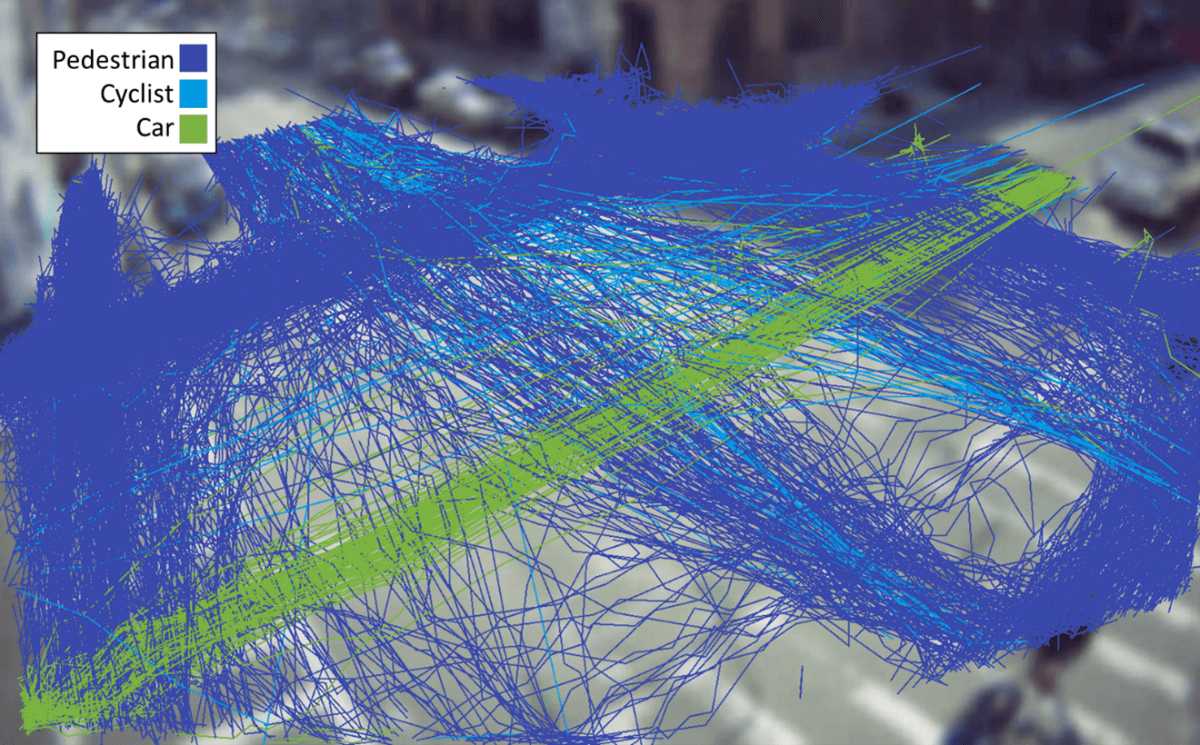New York’s Department of Transportation has kicked off a pilot program to measure street usage with state-of-the-art digital sensors, which could ultimately replace costly and laborious manual counting.
The artificial intelligence technology, developed by urban data analytics firm Viva, enables real-time data collection on city streets, analyzing who is using roads and how, and informing changes that could be made or how effected changes are working.
Viva’s sensor-equipped cameras can distinguish between various modes of travel, including pedestrians, bikes, e-scooters, cars, buses, and trucks, and can count the number of passages across the field of vision in real time. It can also measure speed of travel and detect “near-miss” events. Currently, most of DOT’s street-level data is collected by humans standing on a street corner, counting manually, a process DOT declared as “costly and limited in duration, location, and types of data points collected.”
The city has quietly installed 12 Viva sensor cameras at intersections in the Bronx, Brooklyn, Manhattan, and Queens. If the pilot is successful, DOT would scale it up and use it to build new models for analyzing traffic data, which could inform future street design choices.
The curtain-drop for the newfangled machinery comes one day after Mayor Eric Adams, a self-proclaimed “computer geek,” unveiled high-tech new gizmos for the Polce Department. Those include the return of the “Digidog” robot, K5 surveillance robots to patrol subway stations, and a device that launches sticky, GPS-bearing projectiles at cars to avoid chases.
“From the police department to City Hall, I have dedicated so much of my career in public service to using modern technology to make government operate more effectively and most efficiently for New Yorkers. And this street activity sensor technology will allow us to make our streets safer more quickly,” Hizzoner said in a statement. “This technology has the potential to save time, money, and lives.”
Viva’s metrics will eventually be published on the city’s open data portal. To protect New Yorkers’ privacy, the data will not contain personal identifying information, DOT says, and video frames will be deleted after data is collected.
So far, Viva cameras have been installed at the following locations:
BRONX
- Willis Avenue & East 135th Street
BROOKLYN
- Schermerhorn Street & Smith Street
- Flushing Avenue & Vanderbilt Avenue
- Berry Street & North 6th Street
- Hoyt Street & Warren Street
MANHATTAN
- Central Park West Drive & Columbus Circle
- 1st Avenue & East 59th Street
- Brooklyn Bridge
- 6th Avenue & West 23rd Street
QUEENS
- 34th Avenue & 77th Street
- Broadway & Vietor Avenue
- 11th Street & 44th Drive
Read more: MTA Adds More LIRR Trains, Retools Schedule




































